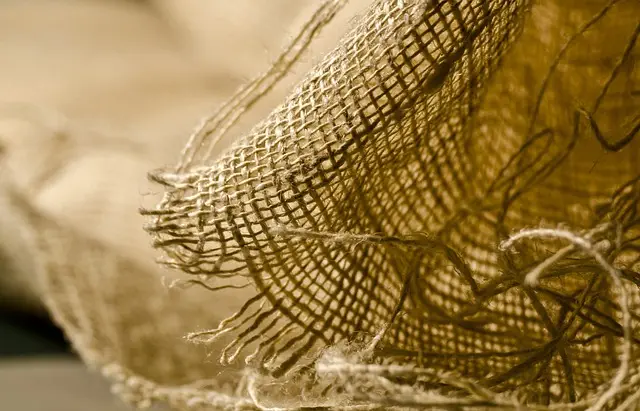The article explores the distinct benefits of Red Vein Sumatra and Maeng Da Kratom for enhancing training recovery, with a focus on their unique alkaloid profiles. Red Vein Sumatra is recognized for its analgesic properties that help alleviate muscle soreness post-exercise, offering a balancing effect that is both stimulating and calming. This strain may aid in recovery without causing overstimulation, potentially facilitating quicker returns to training with reduced pain levels. Maeng Da Kratom, known for its balanced alkaloid profile with high mitragynine content, supports physical recovery while maintaining energy and endurance during workouts. Both strains offer different advantages, with Red Vein Sumatra providing relaxation and pain management, and Maeng Da offering a more energetic recuperation phase. The article advises users to consider their personal responses to these strains, as individual differences can significantly influence the effectiveness of each for managing post-exercise muscle soreness. It emphasizes the importance of careful dosing, starting low and adjusting as needed, and stresses the necessity of consulting healthcare professionals before using kratom. The comparison between Red Vein Sumatra and Maeng Da Kratom highlights their unique recovery benefits and underscores the need for individual assessment when integrating these supplements into a fitness regimen, all while encouraging responsible usage within legal frameworks.
Embarking on a journey to enhance athletic recovery, this article delves into the potential of kratom—particularly Red Vein Sumatra and Maeng Da strains—to support post-training recuperation. Through an in-depth exploration of their alkaloid profiles and user experiences, we aim to uncover how these strains can play a role in mitigating muscle soreness. Join us as we navigate the complexities of kratom’s effects on training recovery, offering valuable insights for those seeking natural supplementation options. Key focus will be placed on the contrast between Red Vein Sumatra vs Maeng Da, along with dosage considerations to optimize your post-training wellness regimen.
- Unraveling the Effects of Red Vein Sumatra and Maeng Da Kratom on Training Recovery
- Comparative Analysis: Alkaloid Profiles and Their Role in Muscle Soreness Mitigation
- User Experiences and Dosage Considerations for Optimal Post-Training Recovery with Kratom Strains
Unraveling the Effects of Red Vein Sumatra and Maeng Da Kratom on Training Recovery

When it comes to optimizing training recovery, athletes and fitness enthusiasts often explore various natural supplements, with Red Vein Sumatra and Maeng Da Kratom being popular choices due to their unique alkaloid profiles. Red Vein Sumatra kratom is renowned for its analgesic properties, which can significantly alleviate muscle soreness and pain associated with intense training sessions. Its effects are often described as balancing, providing both stimulating and calming sensations that aid in the recovery process without overstimulating the body. This balance can be particularly beneficial for individuals who have experienced discomfort or fatigue following their workouts, allowing them to return to training more quickly with less residual pain.
On the other hand, Maeng Da Kratom is another potent strain known for its stimulant effects and its potential to enhance mental focus alongside physical recovery. The alkaloid composition of Maeng Da, which includes 7-hydroxymitragynine in substantial amounts, contributes to its efficacy in promoting faster muscle recovery. Users often report that this strain helps them push through their workouts with increased energy and endurance while also assisting in the post-exercise recuperation phase. The comparison between Red Vein Sumatra and Maeng Da Kratom for training recovery is multifaceted, as each strain offers distinct benefits. Red Vein Sumatra’s analgesic effects are ideal for managing pain during the recovery period, whereas Maeng Da’s stimulating properties may be more conducive to maintaining performance levels while supporting the body’s healing processes after intense physical activity. Users interested in incorporating these strains into their recovery routine should consider personal responses to each type, as individual differences can influence the effectiveness of kratom for training recovery.
Comparative Analysis: Alkaloid Profiles and Their Role in Muscle Soreness Mitigation

When considering the role of kratom in training recovery, particularly in mitigating muscle soreness, it’s crucial to examine the alkaloid profiles of different strains and how they compare in this regard. Kratom, a plant native to Southeast Asia, contains a diverse array of alkaloids, with mitragynine and 7-hydroxymitragynine being among the most prominent. Red Vein Sumatra and Maeng Da are two popular kratom strains used by individuals seeking relief from muscle soreness associated with intense physical activity.
Red Vein Sumatra is known for its high concentration of 7-hydroxymitragynine, which is believed to play a significant role in pain management and relaxation. This alkaloid may help reduce the perception of muscle soreness by binding to opioid receptors in the brain, similar to how opioids work, though it should be used with caution and as part of a holistic recovery plan. On the other hand, Maeng Da, which translates to “pimp grade” in Thai, is a blend of different vein types and is generally considered to have a balanced alkaloid profile that includes higher levels of mitragynine compared to 7-hydroxymitragynine. This balance may contribute to a unique effect that can aid in muscle recovery without overwhelming sedative effects. Users often report that Maeng Da provides a more stimulating and energetic experience, which could be beneficial for individuals looking to maintain performance during recovery phases or when engaging in lighter training sessions. Both strains have their own distinct alkaloid makeup that can influence their effectiveness in managing post-exercise muscle soreness, with the choice between them often depending on the user’s specific needs and preferences.
User Experiences and Dosage Considerations for Optimal Post-Training Recovery with Kratom Strains

Users who engage in rigorous training and seek natural means to facilitate recovery often turn to kratom, a botanical supplement derived from the leaves of Mitragyna speciosa. Experiences with kratom strains like Red Vein Sumatra and Maeng Da have been varied among individuals, with personal anecdotes highlighting their unique effects on pain relief, mood enhancement, and energy management. Red Vein Sumatra is often reported to provide a soothing and calming effect, ideal for relaxation after intense physical activity. Conversely, Maeng Da kratom is known for its balanced alkaloid profile that offers both stimulating and sedative properties depending on the dosage consumed.
Dosage considerations are paramount when using kratom for recovery purposes. The optimal dosage can vary significantly from one user to another, based on factors like body weight, tolerance, and the desired effect. For Red Vein Sumatra, a moderate dose typically ranges from 4 to 8 grams, which users describe as conducive to relaxation without overwhelming sedation. Maeng Da, with its potentially more potent alkaloid content, often requires less powder for effects to be felt. A starting dosage of 2 to 5 grams may suffice for many users seeking a balance between energy and pain relief. It is crucial to begin with a lower dose to gauge individual sensitivity and effects before gradually increasing as needed, always adhering to responsible usage guidelines and staying informed about local laws and regulations regarding kratom consumption. Users should also consider the method of ingestion, whether through capsules, tea, or tinctures, as this can affect the onset and duration of effects. Consulting with healthcare professionals is recommended before integrating kratom into any recovery regimen to ensure safe and effective use.
In conclusion, the exploration of kratom’s role in training recovery, particularly through strains like Red Vein Sumatra and Maeng Da, has shed light on their distinct alkaloid profiles and potential for mitigating muscle soreness. The comparative analysis highlights that both strains may offer unique benefits, with Red Vein Sumatra and Maeng Da each presenting their own advantages for individuals seeking to enhance their post-training recovery process. User experiences underscore the importance of individual dosage considerations to maximize these benefits while ensuring safety and efficacy. As the body of research continues to grow, it is clear that kratom strains such as Red Vein Sumatra and Maeng Da merit further scrutiny within the context of athletic performance and recovery. Users are encouraged to approach their use with caution and informed by scientific evidence, as individual responses can vary significantly. With careful consideration and responsible use, these kratom strains could be a valuable addition to an overall wellness and recovery regimen for athletes and active individuals.






